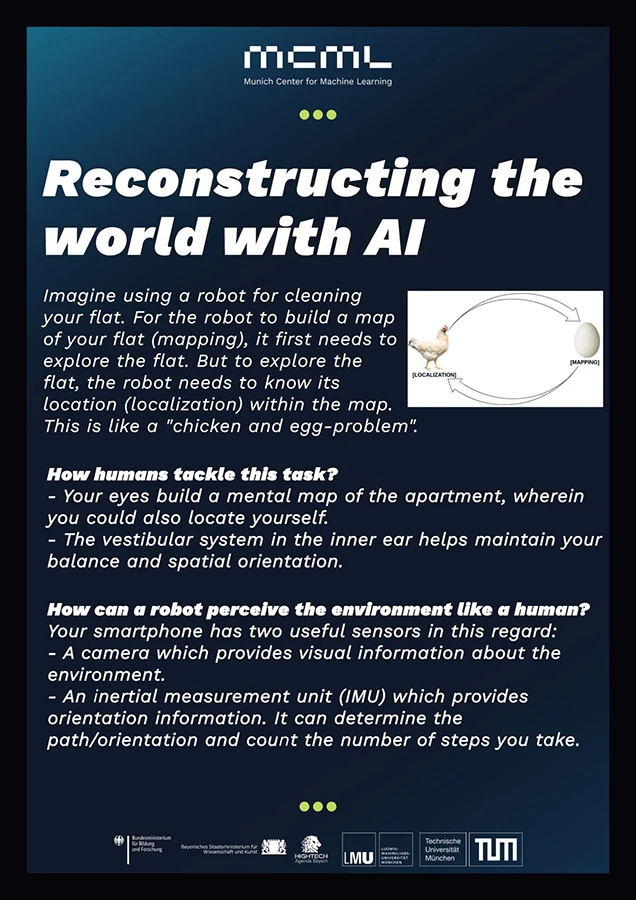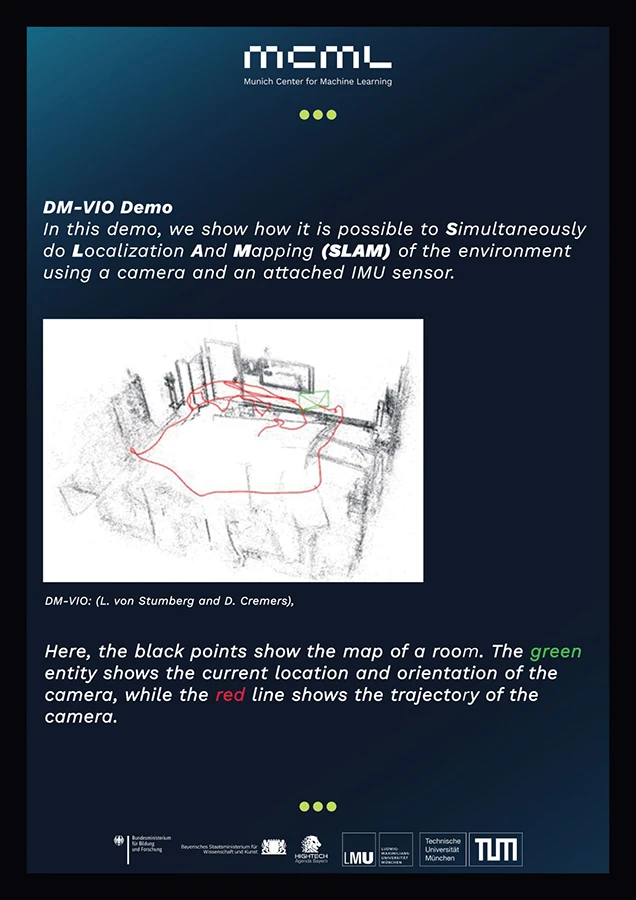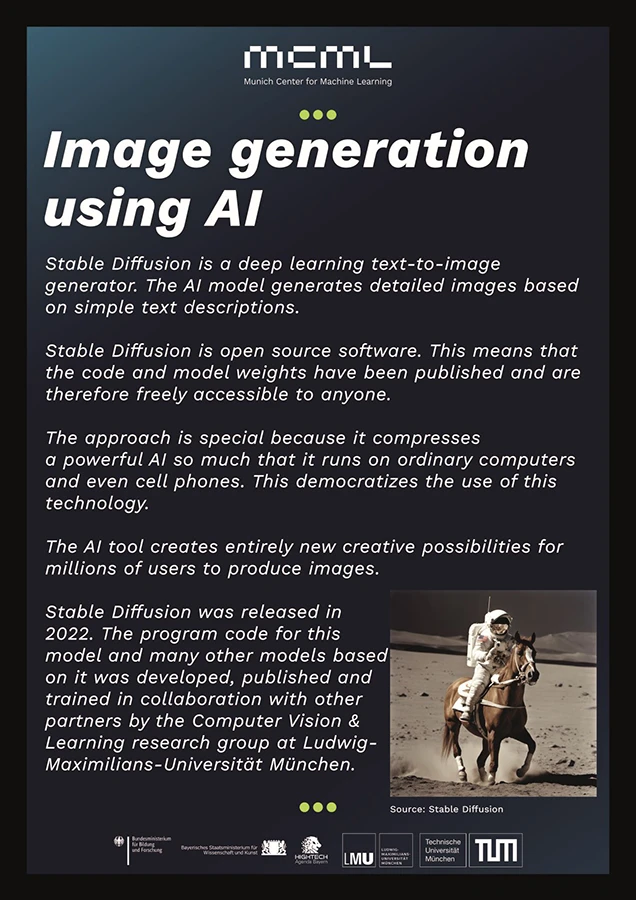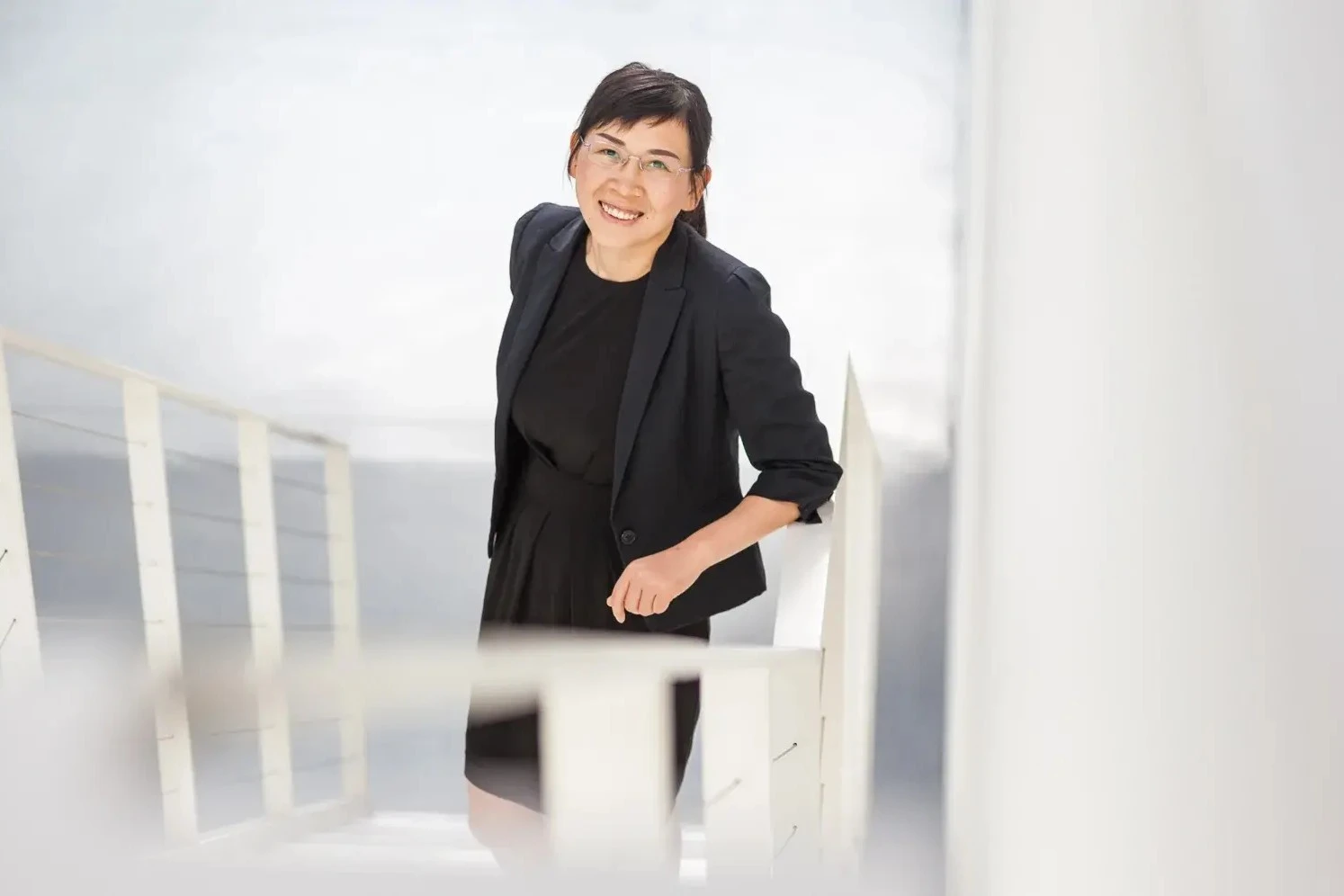22.01.2024

The MCML-Exhibition at Deutsches Museum Munich
Our Exhibition Was a Great Success - A Short Recap
The Science Communication Lab at Deutsches Museum hosted our MCML exhibition that attracted thousands of visitors over three weeks.
The exhibition featured interactive exhibits on machine learning, simultaneous localization and mapping (SLAM), and Stable Diffusion, an algorithm that connects images and text. Visitors gained insights into cutting-edge research and enjoyed engaging hands-on experiences.
Around 1.000 visitors per day passed by the Science Communication Lab at Deutsches Museum and saw our exhibition during the last three weeks. It was a lot of fun and we are happy that so many visitors were interested and got a glimpse of our research.
One of the exhibits called AMELIE taught visitors the basics of machine learning in a fun and interactive way. The exhibit was built by the LMU Media Informatics Group of our PI Albrecht Schmidt. You can see a video of the exhibit on YouTube.
In addition we had a demo showing how it is possible to simultaneously do localization and mapping of the environment using a camera and an attached IMU sensor. The method is called DM-VIO and can be used in self-driving cars, for example. DM-VIO is a project of the TUM Computer Vision Group led by our director Daniel Cremers.
Last but not least, we gave some insights into Stable Diffusion, a deep learning model that generates images from text descriptions. Stable Diffusion is developed by the LMU Computer Vision & Learning Group of our PI Björn Ommer. We explained how Stable Diffusion learns the connection between image and text through a latent diffusion model process.

©MCML
Poster 1: How does AI learn
AMELIE is the name of the museum exhibit that helped visitors understand machine learning principles.

©MCML
Poster 2: Reconstructing the world with AI
We presented DM-VIO, a monocular visual-inertial odometry system based on two novel techniques called delayed marginalization and pose graph bundle adjustment.

©MCML
Poster 3: DM-VIO demo
On this poster visitors saw how the Simultaneous Localization and Mapping unfolds

©MCML
Poster 4: Image generation using AI
Visitors saw how Stable Diffusion works and were able to try it out themselves.
Related

©BAdW / Karl Neunert
08.12.2025
Tom Sterkenburg Wins Karl-Heinz Hoffmann Prize of the Bavarian Academy of Sciences
MCML JRG Leader Tom Sterkenburg receives the Karl-Heinz Hoffmann Prize of the BAdW for his interdisciplinary research.

©Juli Eberle / TUM / ediundsepp Gestaltungsgesellschaft
04.12.2025
World’s First Complete 3D Model of All Buildings Released
Xiaoxiang Zhu’s team releases GlobalBuildingAtlas, a high-res 3D map of 2.75B buildings for advanced urban and climate analysis.

04.12.2025
When to Say "I’m Not Sure": Making Language Models More Self-Aware
ICLR 2025 research by the groups of David Rügamer, and Bernd Bischl introduces methods to make LLMs more reliable by expressing uncertainty.

28.11.2025
MCML at NeurIPS 2025
MCML researchers are represented with 47 papers at NeurIPS 2025 (38 Main, and 9 Workshops).
